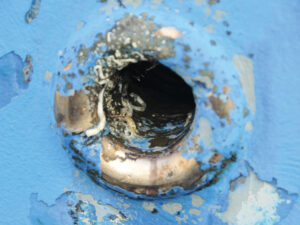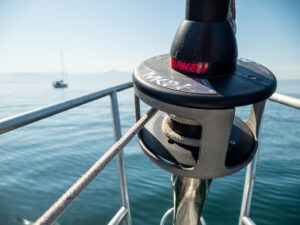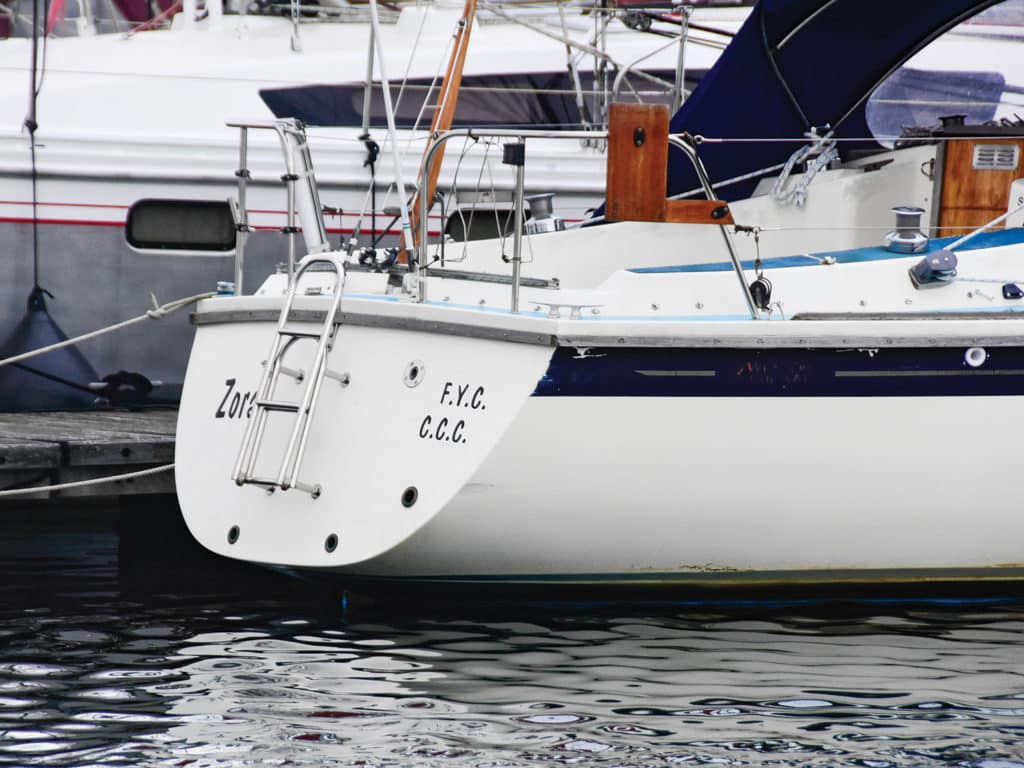
Avoiding a fall overboard is, or should be, foremost in the mind of every sailor. I first heard the axiom “one hand for yourself and one for the ship” as a student aboard the sail-training vessel Westward. Safety was of paramount concern, and we students were routinely reminded that falling overboard, especially offshore and at night, was an almost certain death sentence. It left an impression that has remained with me ever since. Now consider this: People have died falling overboard, into cold water, at night, because they could not reboard the vessel…while dockside. In a seaway, of course, the challenges and risks are exponentially greater.
Walking the docks during this past season’s boat shows, it was difficult for me not to be struck by the lack of thought given to boarding—or, more important, reboarding—a vessel from the water. (Yes, this topic wanders a bit from my usual maintenance stories, but it’s because I feel it’s so important.) If anything, it seems to be an equal afterthought for many sail and power vessels. I’ve found that when ladders are present, in many cases they can be deployed only by those aboard. And if they can be deployed by someone in the water, that person runs the risk of being struck by a deck-hinged ladder as it arcs over its pivot point.
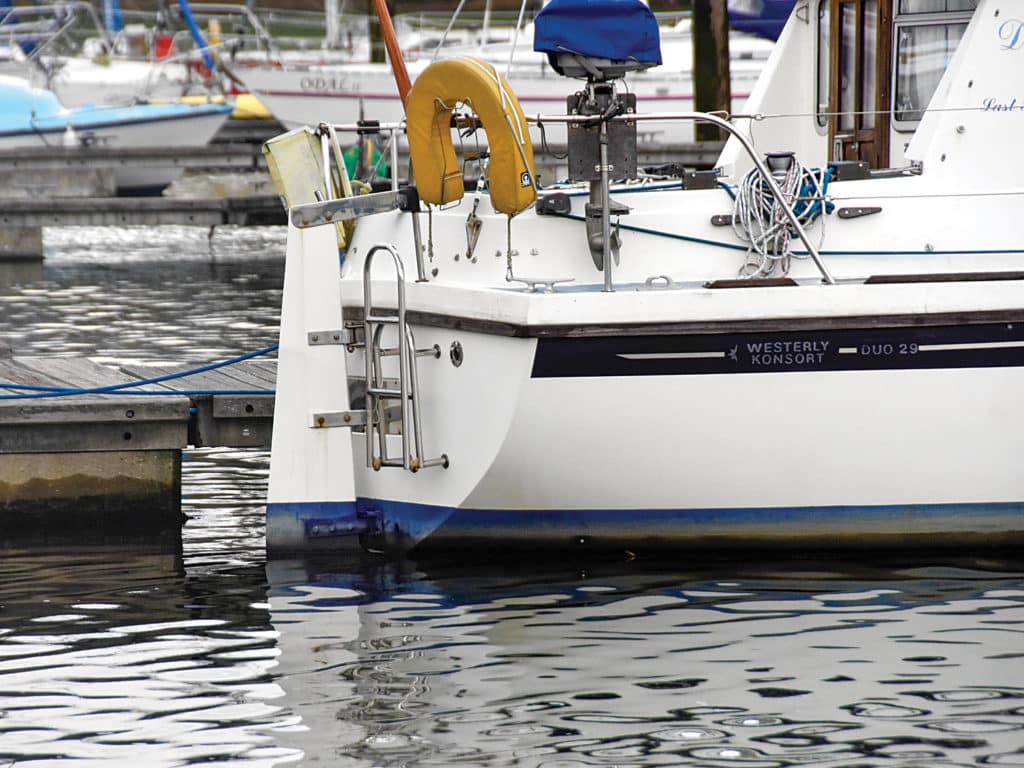
Fortunately, boatbuilders and boat owners aren’t left to figure this out entirely on their own. The American Boat and Yacht Council Standards includes a chapter on the subject called “Reboarding Means, Ladders, Handholds, Rails and Lifelines,” where you can find the following language relevant to reboarding (with my italics and corrections to grammar): “Means of unassisted reboarding shall be provided on all boats. The reboarding means shall be accessible to, and deployable by, the person in the water. This may include, but is not limited to, steps, swim platforms, handhold devices, grab rails, or ladders.” Thus, some means—often, but not always, a ladder—must be provided for getting back aboard should one go over the side.
The reboarding section of this chapter isn’t very long; there’s just one additional passage worth sharing: “The top surface of the lowest step of a reboarding ladder…shall be at least 22 inches below the waterline, with the boat in the static floating position.”
This is one of the few instances in which I’m not in agreement with ABYC Standards. As far as boarding ladders are concerned, within reason, the deeper the better. Deep ladders—those with more rungs below the waterline—are easier to use because they don’t require the person in the water to lift their feet up to the bottom rung and hoist themselves up horizontally, or diagonally, which is more difficult, especially if wearing sodden clothing, as opposed to stepping up vertically. Remember, a ladder used for unassisted reboarding by a person who has fallen overboard should require as little effort as reasonably possible.
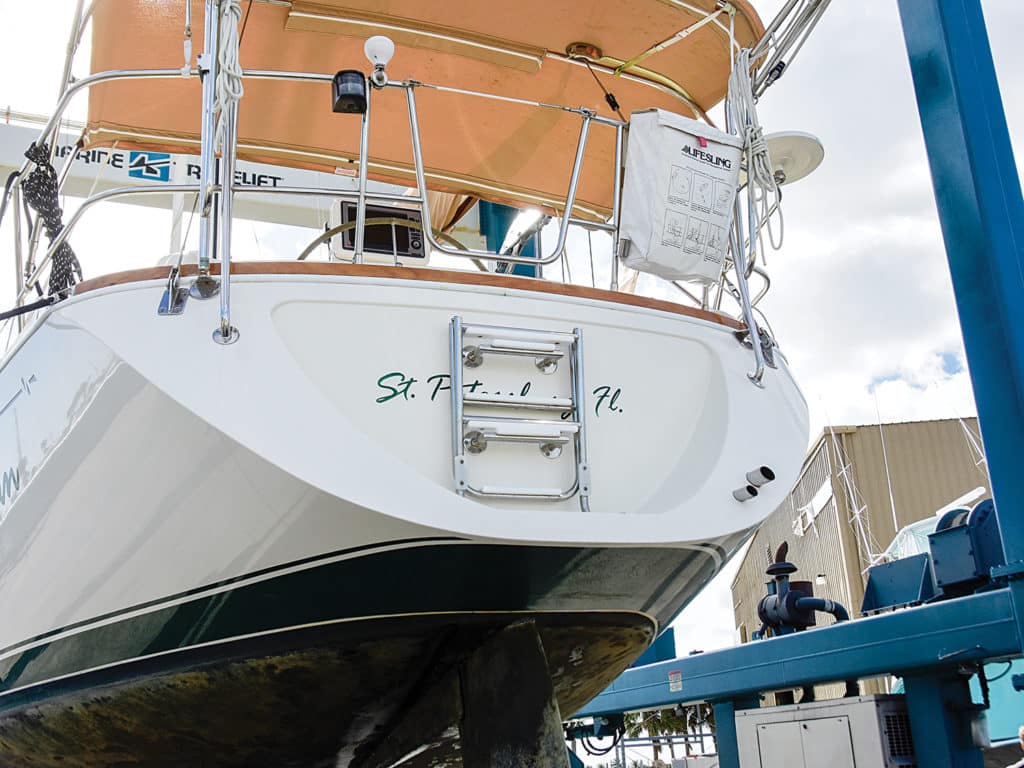
Ladders designed for reboarding must possess the following attributes: They must be deep, at least the aforementioned 22 inches below the waterline, but preferably deeper. When deployed, it’s best if they rest diagonally, with the bottom portion farther away from the boat than the top, making it more like a step ladder than a common vertical ladder. The rungs should be flat or flattish rather than round (which are hard on bare feet). And above all else, they must be easy to deploy in complete darkness (or by someone who has lost his or her glasses), without getting jammed (telescope stainless ladders are prone to corrosion and binding), without pinching fingers or hands, and without running the risk of beaning the person in the water.
All reboarding systems, whatever form they might take, should be tested by every crewmember aboard (both adults and children) after being briefed on their operation to confirm that everyone can use them successfully, without direction or assistance from those aboard. Finally, ladders should be deployed and tested every few months. Every so often I encounter a ladder, designed for reboarding, that is inextricably seized or stuck in its stored position. And I remember my lessons from long ago.
Steve D’Antonio offers services for boat owners and buyers through Steve D’Antonio Marine Consulting (stevedmarineconsulting.com).


